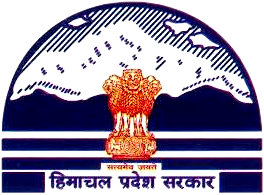
Governance in Himachal Pradesh
The Governor
The Governor is the head of the state administration. All the executive powers of the state are vested in him. But he does not exercise these powers on his own. These powers are exercised by him on the advice of the Council of Ministers. He is a constitutional head or nominal head.
The Chief Minister and the Council of Ministers
There is a Chief Minister along with council of ministers. The council of Ministers and its leader, the Chief Minister, actually and effectively exercise all the powers which have formally been vested in the Governor by the constitution. They carry on administration with the help of permanent civil servants drawn from the Indian Administrative Services, State Administrative Services and other specialized services.
The Chief Secretary is the head of the permanent administrative machinery. There are other secretaries. Joint Secretaries, Deputy Secretaries and Under Secretaries etc. in the Secretariat. Each District has a Deputy Commissioner. There are Divisional Commissioners in between the Deputy Commissioners and the Secretariat Chief Medical Officer, District Education Officer and the Superintendent of Police are three important officials at the district level. Numerous other social and welfare departments are headed by their respective officers. These administrative officers play a vital role and help in implementing the pledges and policies of the ministers. They place at the latter’s disposal their expert advice and help in the formulation of various schemes for the welfare of the people.
The Legislative Assembly
The Legislative Assembly is the popular elected house. The members are elected on the basis of adult franchise. In Himachal Pradesh there are 68 members of the Legislative Assembly out of which 19 belong to Scheduled Castes and Scheduled Tribes. Since the Council of Ministers is responsible to it, the Assembly exercises control over the administration of the State. The members have the right to ask questions, move motions of censure as well as of no confidence.
Local governance bodies
A democratic system of administration can successfully operate if there is democratic decentralization. Such a decentralization gives to the people a sense of participation in the decision-making processes of the administration and thus strengthens democracy at the grassroots. For these purposes, the Panchayati Raj system has been introduced in Himachal Pradesh.
The administration of the rural areas of Himachal Pradesh was to be carried on through three-tier organizational set-up of Panchayati Raj, i.e. Zila Parishads, Panchayt Samities and Gram Panchayats. But in Practice there are only two-tier set-up i.e. Panchayat Samiti and Gram Panchayat.
The Administration of the urban areas of Himachal Pradesh is carried on through Municipal Corporation, Municipal Committees, Notified area committees etc. The nomenclature of municipal committee and notified area committee has been changed as Nagar Parishad and Nagar Panchayats respectively.
Before closing this brief description of the administrative system of Himachal Pradesh there are some other agencies which are also a part of administrative system i.e. the State High Court, State Public Service Commission, H.P. Administrative Tribunal and Lokayukta.
Divisional and district administration
The government and administration can not be effectively conducted from a single centre. Therefore, state is divided into three divisions with divisional commissioner as head of the division. Each Division is divided into four districts with Deputy Commissioner as a head of the district. District has been and continues to be the principal unit of administration in India. The activities of the district administration cover a wide range and touch the lives of people at many points.
The primary emphasis in the district administration is on the implementation of development programme with the cooperation and support of the people. Each district is divided into two or more sub-divisions, each of which is in the charge of a sub-divisional officer. Each sub-division is divided into two or more administrative areas called tehsils, under the charge of a tehsildar. Tehsils are divided, for administrative convenience, into sub-tehsils and these are further divided into revenue circles.
[/lockercat]HPPCS Notes brings Prelims and Mains programs for HPPCS Prelims and HPPCS Mains Exam preparation. Various Programs initiated by HPPCS Notes are as follows:-
- HPPCS Mains Tests and Notes Program
- HPPCS Prelims Exam - Test Series and Notes Program
- HPPCS Prelims and Mains Tests Series and Notes Program
- HPPCS Detailed Complete Prelims Notes
